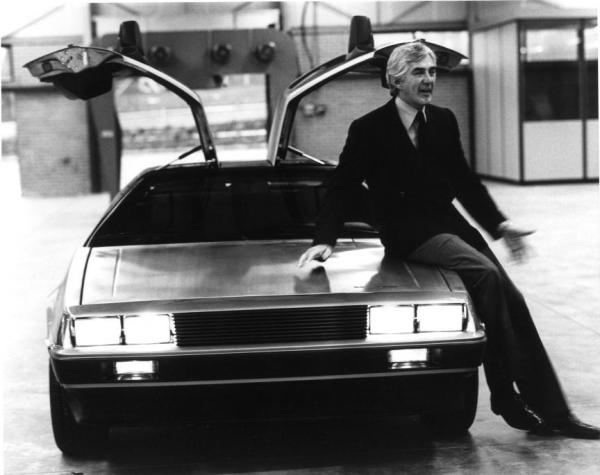Before he was crushed beneath the wheel of his dreams. John Z. DeLorean had as much ambition as anyone in the history of American commerce. From a 1980 People article by Martha Smilgis about the automaker, when all roads still seemed wide open and endless:
“Six years ago John Z. (for Zachary) DeLorean was earning $650,000 a year as a General Motors vice-president—with a passably clear track to the presidency—when he stunned Detroit by abruptly quitting. Two months ago he rocked Motor City again, this time because of a book that attacks his old company for waste, corruption, neglect of consumers and corporate amorality. Among some cringing auto company men, the book has made him a hero—’He’s the only man who ever fired General Motors,’ as one admirer puts it. Now DeLorean, who will be 55 this week, is about to go that one better. Next fall he will market a new sports car of his own design and production, and he has convinced some GM dealers to distribute it. ‘Don’t people believe you can start a business these days?’ DeLorean asks skeptics. ‘I’d like to show that a bunch of little guys can make it.’
The humility is attractive but a bit disingenuous. DeLorean Motor Company is a $200 million operation backed by a consortium of investors in the U.S. and Europe (Johnny Carson among them). DeLorean himself is hardly the average internal-combustion tinkerer. A twice-divorced bon vivant whose romantic life has been as prodigious as his business career, DeLorean fled Detroit in part, he says, because he was bored with it.
The disenchantment is plain in his book, On a Clear Day You Can See General Motors. Written by the former Detroit bureau chief of Business Week, J. Patrick Wright, and billed as DeLorean’s ‘own story,’ the book charges GM with official nonchalance toward the Corvair (a car that inspired Ralph Nader’s Unsafe at Any Speed). It ridicules numbing, time-wasting rituals of paper-shuffling in the executive suites and waxes outraged at the perks demanded by top GM brass. (To provide a traveling sales executive with his customary midnight snack, the book charges, GM took out a window in his hotel suite and lowered in a fully stocked refrigerator by crane.) After giving Wright all his ammunition, DeLorean pulled out of their publishing agreement—thereby saving his skin with GM—but Wright published the book anyway. ‘It came out a lot tougher than was my intention,’ DeLorean says. ‘I wanted it to be constructive.’ Then he smiles and adds, ‘GM hasn’t retaliated. In fact they’ve offered me an opportunity to merge with their Iranian subsidiary.’ A Ford factory worker’s son who paid his own way through college and earned master’s degrees in automotive engineering and business at night, DeLorean insists he has goodwill toward his old company: ‘GM was very good to me. I was an unsophisticated transmission engineer who was given many opportunities.’
What GM never appreciated, he says, was his life-style. Six-foot-four with movie star good looks, DeLorean is a physical fitness zealot who works out three times a week and is as proud of his 30-inch waist as of his latest marketing coup. Between his three marriages, he squired the likes of Ursula Andress, Joey Heatherton, Candice Bergen and Nancy Sinatra. Such glamorous escorts, along with his modishly long hair and turtleneck sweaters, scandalized automotive society. In 1973 he married fashion model Cristina Ferrare—she had lived with him for three months before saying, ‘Either we marry or I am leaving.’ The clatter of tongues grew louder. He was 48, she was 23. ‘I consider myself young for my age, so that wasn’t a problem for us,” he says. ‘But Cristina wasn’t accepted into Detroit society, and I didn’t want to subject her to that kind of vindictiveness. When I told her I wanted to leave, she supported me 100 percent.'”
••••••••••
A year before the People article was published, Gary Numan showed appreciation for automobiles:
More DeLorean posts:
Tags: J. Patrick Wright, John DeLorean, Martha Smilgis, Ralph Nader

